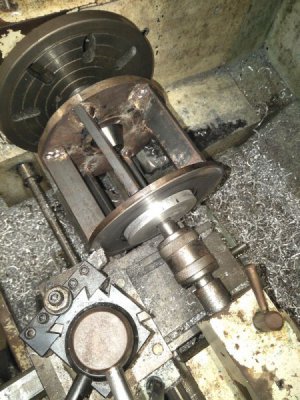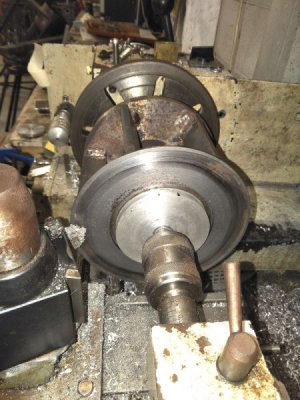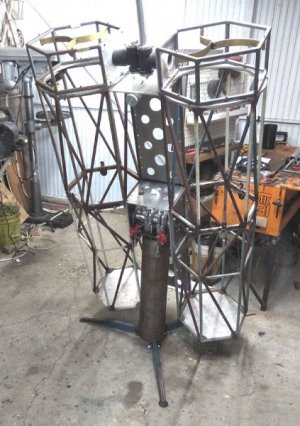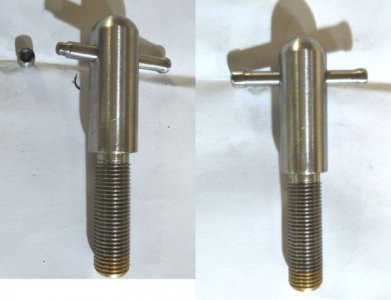- Joined
- Aug 22, 2012
- Messages
- 4,271
This is for the azimuth brake, it screws down through the plate the altitude bearings are bolted to.
The brass tip has an internal M8x1 thread lock tighted in, the external thread is M12x1.25 single pointed.
Hopefully the brass tip will rub against the top of the steel disk the main bearing sits in giving a brake.
There will be two of these opposite each other with the one to the rear permanently on sufficient to produce drag with the front one adjustable.
I want to cross drill for a tommy bar but need everything assembled so I know where it will lie when fully locked.

I had made two more of these but sheared the brass screw off just as it fully mated so had to dump them
The brass tip has an internal M8x1 thread lock tighted in, the external thread is M12x1.25 single pointed.
Hopefully the brass tip will rub against the top of the steel disk the main bearing sits in giving a brake.
There will be two of these opposite each other with the one to the rear permanently on sufficient to produce drag with the front one adjustable.
I want to cross drill for a tommy bar but need everything assembled so I know where it will lie when fully locked.

I had made two more of these but sheared the brass screw off just as it fully mated so had to dump them






